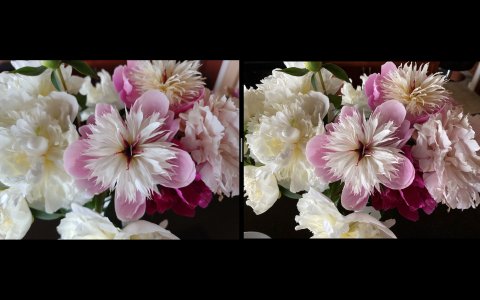(Starting a dedicated thread for this photo topic, since it's a specific problem concern.)
I'm struggling to get fully clear, in-focus standard lens photos from my edge+ on semi-close up (but not macro) shots, vs. what I've been used to from my 2017 Moto Z2F. It's almost as if edge+ Moto Camera is improperly applying Portrait mode bokeh blurring to standard shots, with poor edge detection. (I recall at least one press reviewer describing this problem in a hands-on launch review, too.)
Compare the photos below from edge+ (left image) vs. Z2F (right image). This appears to occur consistently with standard lens photos with field depth, vs. shots against a close distance background (wall, countertop, etc.). It's frustrating in that I expected *sharper* images from edge+'s 27MP images (quad-binned 109MP), vs. the Z2 Force 12MP sensor.
Click to view the large images, and then click again to magnify to full resolution. (Note, these uploads are not original resolution, but still show the issue I'm describing).
Notice the blurred petal edges on the left edge+ image:
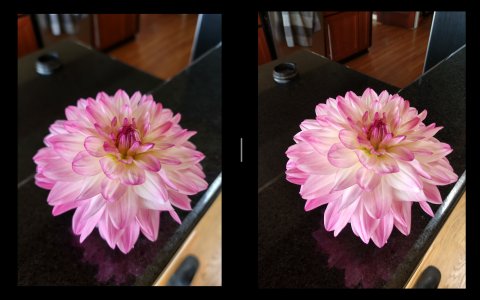
Notice the blurred building in the background on the left edge+ image:
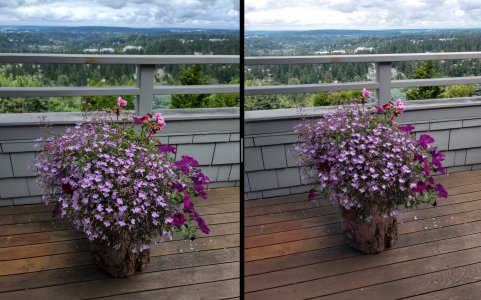
Notice blurred hanging plant, shingles, and large red fronds:
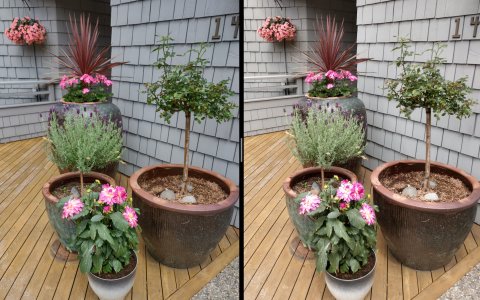
Here's a crop of above:
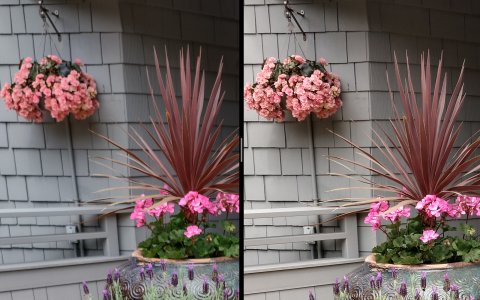
I'm struggling to get fully clear, in-focus standard lens photos from my edge+ on semi-close up (but not macro) shots, vs. what I've been used to from my 2017 Moto Z2F. It's almost as if edge+ Moto Camera is improperly applying Portrait mode bokeh blurring to standard shots, with poor edge detection. (I recall at least one press reviewer describing this problem in a hands-on launch review, too.)
Compare the photos below from edge+ (left image) vs. Z2F (right image). This appears to occur consistently with standard lens photos with field depth, vs. shots against a close distance background (wall, countertop, etc.). It's frustrating in that I expected *sharper* images from edge+'s 27MP images (quad-binned 109MP), vs. the Z2 Force 12MP sensor.
Click to view the large images, and then click again to magnify to full resolution. (Note, these uploads are not original resolution, but still show the issue I'm describing).
Notice the blurred petal edges on the left edge+ image:

Notice the blurred building in the background on the left edge+ image:

Notice blurred hanging plant, shingles, and large red fronds:

Here's a crop of above:




